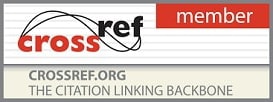Impact Factor: Impact Factor(RJIF): 5.3
International Journal of Home Science
2023, VOL. 9 ISSUE 3, PART D
Nutritional value of red-fleshed and skinned pitaya (Hylocereus polyrhizus) species
Author(s): Yamunadevi Puraikalan and Alison Laton
Abstract:
The primary objective of this research was to delve into the nutritional value of the red skin with red flesh dragon fruit, which is scientifically known as Hylocereus polyrhizus. The study aimed to provide a comprehensive understanding of the nutrient content of this exotic fruit and its potential impact on human health. The fruit's nutritive value is based on its physical and chemical properties, such as its energy content, protein, fat, carbohydrates, crude fiber, calcium, magnesium, vitamin A, vitamin C, antioxidants, flavonoids, phenolic acid, and quercetin. These essential nutrients play a vital role in promoting overall health and well-being by boosting the immune system, reducing inflammation, and preventing chronic diseases. The dragon fruit powder sample has an energy level of 378 Kcals per 100 grams. The nutrient analysis shows that it contains 0.73 g +/-0.03 of protein, 0.15 g +/-0.01 of fat, 93.29 g +/-0.97 of carbohydrates, 0.22 g+/-0.15 of fiber, 0.01 mg+/- 0.001 of calcium, 70.40 mg +/-0.10 of magnesium, 84.33 IU+/-1.53 of Vitamin A, 20.67 mg +/-0.15 of Vitamin C, 464.00 mg/Kg +/-1.00 of antioxidants, 114.00 mg/Kg+/-1.00 of flavonoids, 976.33 mg/Kg +/-1.53 of phenolic acid, and 116.00 mg/Kg +/- 1.00 of quercetin. This red fruit is a valuable ingredient that can be a beneficial addition to culinary and nutritional pursuits due to its high antioxidant content.
The primary objective of this research was to delve into the nutritional value of the red skin with red flesh dragon fruit, which is scientifically known as Hylocereus polyrhizus. The study aimed to provide a comprehensive understanding of the nutrient content of this exotic fruit and its potential impact on human health. The fruit's nutritive value is based on its physical and chemical properties, such as its energy content, protein, fat, carbohydrates, crude fiber, calcium, magnesium, vitamin A, vitamin C, antioxidants, flavonoids, phenolic acid, and quercetin. These essential nutrients play a vital role in promoting overall health and well-being by boosting the immune system, reducing inflammation, and preventing chronic diseases. The dragon fruit powder sample has an energy level of 378 Kcals per 100 grams. The nutrient analysis shows that it contains 0.73 g +/-0.03 of protein, 0.15 g +/-0.01 of fat, 93.29 g +/-0.97 of carbohydrates, 0.22 g+/-0.15 of fiber, 0.01 mg+/- 0.001 of calcium, 70.40 mg +/-0.10 of magnesium, 84.33 IU+/-1.53 of Vitamin A, 20.67 mg +/-0.15 of Vitamin C, 464.00 mg/Kg +/-1.00 of antioxidants, 114.00 mg/Kg+/-1.00 of flavonoids, 976.33 mg/Kg +/-1.53 of phenolic acid, and 116.00 mg/Kg +/- 1.00 of quercetin. This red fruit is a valuable ingredient that can be a beneficial addition to culinary and nutritional pursuits due to its high antioxidant content.
Pages: 271-275 | 208 Views 120 Downloads

How to cite this article:
Yamunadevi Puraikalan, Alison Laton. Nutritional value of red-fleshed and skinned pitaya (Hylocereus polyrhizus) species. Int J Home Sci 2023;9(3):271-275.






